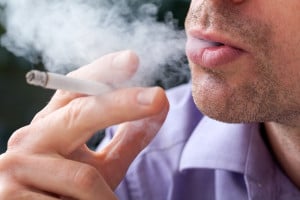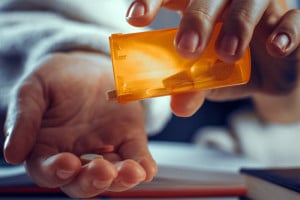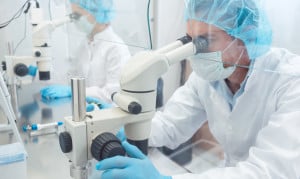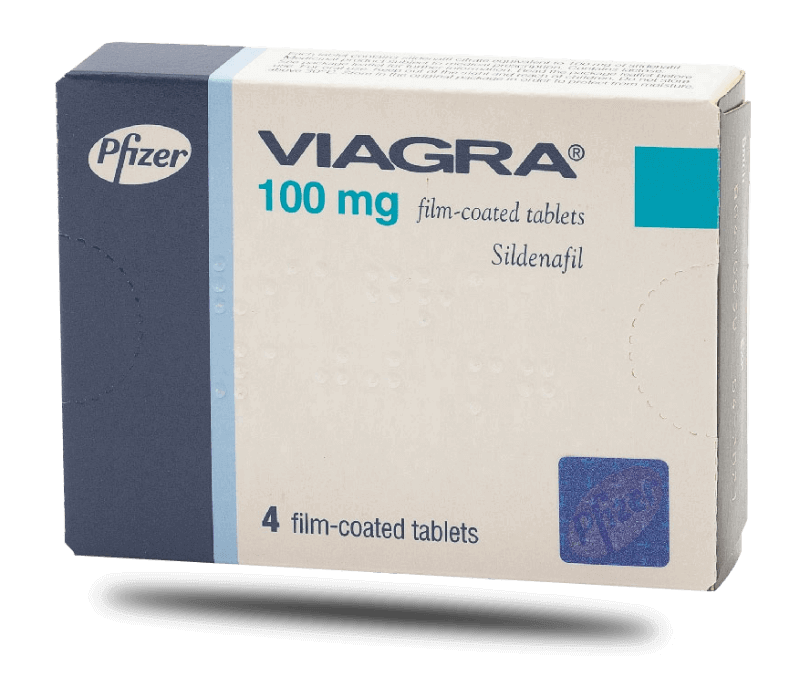Is Erectile Dysfunction Common In Men Under 40?

What is erectile dysfunction?
Erectile dysfunction is defined as the consistent and recurrent inability to acquire or sustain an erection of sufficient rigidity and duration to engage in satisfactory sexual intercourse.
The process of achieving an erection involves coordination among psychological, neurological, and vascular pathways, which combine to facilitate a physiologic response in the penile vasculature. During sexual stimulation, nitric oxide (NO) is released and activates an enzyme called guanylate cyclase, resulting in an increased level of cyclic guanosine monophosphate (cGMP) in the corpus cavernosum. NO induces relaxation of cavernosal smooth muscle through cGMP.
Erectile dysfunction has a significant impact on the physical and psychological health of men worldwide and can also affect the quality of life of both the sufferers and their partners. It represents one of the few disorders that will motivate young men to see a urologist. Advances in screening and treatment have improved erectile dysfunction detection and management.
Prevalence of erectile dysfunction
In the past, erectile dysfunction has been considered an age-dependent disease, with most men developing signs and symptoms of erectile dysfunction after 65 years. Recent studies have demonstrated an increased incidence of erectile dysfunction in men younger than 40 years.
Click HERE to View Viagra Prices > >
Symptoms of erectile dysfunction
Signs and symptoms of erectile dysfunction include:
-
- Difficulty achieving an erection;
- Inability to sustain an erection;
- Inability to have an erection;
- Premature ejaculation;
- Delayed ejaculation;
- Inability to ejaculate;
- Reduced libido or sex drive;
- A dysfunction in the muscles of the pelvic floor;
- Trauma to the pelvis, such as pelvic fractures;
- Failure to become aroused after sufficient stimulation, which is a condition known as anorgasmia;
- Low levels of the hormone testosterone.
Causes of erectile dysfunction in men under 40
According to the International Society for Sexual Medicine, the mechanism of erectile dysfunction is stratified into two major components: organic and psychogenic. Patients with psychogenic erectile dysfunction experience a sudden onset of symptoms, with decreased libido and good quality spontaneous or self-stimulated erections, while patients with organic erectile dysfunction experienced a gradual onset of the symptoms and a normal libido.
Before 1970, it was believed that erectile dysfunction in men under 40 is primarily of psychogenic origin. However, the studies conducted in recent years have found that a large proportion of young men with erectile dysfunction also have an organic component to their condition.
The psychogenic causes of erectile dysfunction are subdivided into generalized and situational etiologies. Generalized causes of psychogenic erectile dysfunction can include age-related decreases in libido and chronic disorders of sexual intimacy. Situational causes of psychogenic erectile dysfunction can involve psychological distress (depression, job instability and post-traumatic stress disorder), performance anxiety, and partner-related difficulties (unstable interpersonal relationship).
The organic component can be further subdivided into vasculogenic, endocrinologic, neurogenic, structural etiologies and medication side-effects.

Organic causes of erectile dysfunction
Vascular and structural risk factors –
Vascular and structural risk factors for young men with erectile dysfunction include:
- Focal arterial occlusive disease;
- Subclinical endothelial dysfunction;
- Peyronie’s disease.
The precise mechanism of erectile dysfunction in men with Peyronie’s disease is unclear. Peyronie’s disease is thought to arise from repeated trauma to the tunica albuginea with the eventual formation of a plaque that causes penile curvature and concomitant erectile dysfunction. Plaque formation is thought to require a significant amount of time and thus the prevalence of Peyronie’s disease increases as men age.
Endocrine disorders –
Endocrine disorders can affect erectile function, but they do not represent a common source of erectile dysfunction in young men. These disorders include:
- Testosterone deficiency – is more common in older men, only a small percentage of men younger than 50 being found with low testosterone levels.
- Hyperthyroidism and hypothyroidism – according to a Greek clinical study performed on men with thyroid dysfunction, 63% of men with hypothyroidism and 70% with hyperthyroidism had some element of erectile dysfunction compared with 34% in the control group.
- Diabetes – is strongly associated with erectile dysfunction. The increased prevalence of early-onset diabetes will contribute more to the prevalence of erectile dysfunction in young men. It was observed in a prospective study that the incidence of erectile dysfunction in patients with diabetes was 68 cases per 1000 patients per year compared with 25.9 cases per 1000 patients per year in the general population.
- Klinefelter syndrome – is a sex chromosome disorder in boys and men that results from the presence of an extra X chromosome in cells. People typically have 46 chromosomes in each cell, two of which are the sex chromosomes. Females have two X chromosomes (46, XX), and males have one X and one Y chromosome (46, XY). Most often, boys and men with Klinefelter syndrome have the usual X and Y chromosomes, plus one extra X chromosome, for a total of 47 chromosomes (47, XXY). Individuals with Klinefelter syndrome often present to urology clinics with infertility, poor libido, or erectile dysfunction.
- Cryptorchidism – represents a testicle that has not moved into its proper position in the bag of skin hanging below the penis (scrotum) before birth. Patients with cryptorchidism have low testosterone levels which contribute to the occurrence of erectile dysfunction.
- Congenital hypogonadotropic hypogonadism and acquired hypogonadotropic hypogonadism – are frequently associated with low libido and erectile dysfunction.
- High soy diets – it was found in animal studies that large amounts of daidzein, a soy phytoestrogen, cause histologic changes in the penile structure of rats, including a decrease in smooth muscle and elastic fibre content and an increase in collagen.
Neurogenic disorders
In men younger than 40 years, common neurologic causes of ED include:
- Multiple sclerosis – the aetiology of erectile dysfunction in patients with multiple sclerosis involves a mix of cognitive decline, nerve dysfunction, illness-related stress and possible inflammation-dependent endothelial dysfunction.
- Epilepsy – in most studies involving epilepsy and sexual dysfunction, endocrine abnormalities were found in men with epilepsy, especially in men treated with liver enzyme-inducing epileptics. The aetiology of erectile dysfunction in patients with epilepsy is likely to involve a mix of neurologic, psychiatric, cognitive, endocrine, iatrogenic, and psychosocial factors.
- Intramedullary nailing of femoral fractures;
- Lumbar spine procedures;
- Spinal cord injury.
Medication side-effects
 Several medications commonly taken by young men are associated with erectile dysfunction. These medications include:
Several medications commonly taken by young men are associated with erectile dysfunction. These medications include:
- Antidepressants (selective serotonin reuptake inhibitors) – are recognized to cause sexual dysfunction but are not known to induce erectile dysfunction specifically. This class of drugs, especially paroxetine, inhibits cholinergic receptors and nitric oxide synthase, contributing to erectile dysfunction.
- Neuroleptics – are well known to cause erectile dysfunction due to increased prolactin levels.
- Non-steroidal anti-inflammatory drugs – are known to cause erectile dysfunction due to the inhibition of cyclooxygenase-2. The prostaglandins made by cyclooxygenase-2 in the vas deference are thought to be essential in for penile erection.
- Finasteride – is a drug frequently used by young men for the treatment of male pattern baldness. According to a study performed on 1553 young men aged between 18 and 41 years, 1.4% of those using finasteride had erectile dysfunction, whereas only 0.9% of men exposed to placebo had erectile dysfunction.
- Anxiolytics.
- Muscle relaxants.
Psychogenic causes of erectile dysfunction
Intrapsyhiatric disorders
Depression and anxiety represent the main intrapsychiatric risk factors for erectile dysfunction in young men. Population-based studies have found a cross-sectional association between erectile dysfunction and depressive symptoms.
Anxiety can be involved in the pathogenesis of erectile dysfunction often at the initiation of sexual life. Anxiety can lead to a disproportionate focus on the quality of erection, creating a cognitive distraction that adversely affects arousal and subsequently an erection itself. Also, at least one sexual failure can result in anxiety, with loss of sexual confidence, increasing fear, and contributing to the avoidance of sexual experiences that ultimately increase the probability of future failures, creating a vicious cycle.
Relational components
The relationship between erectile dysfunction and couple relation impairment is well known. Subjects who reported conflicts within the couple were characterized by a broad spectrum of sexual symptoms, including a severe extent of erectile dysfunction.
How is erectile dysfunction diagnosed?
Diagnosing erectile dysfunction is relatively simple and a process that should leave you with nothing to be embarrassed about. You will need to consult with a registered doctor, who will recommend a treatment based on your symptoms and your physical and mental health, among other things. Your doctor will ask you the following:
- If you have difficulties obtaining an erection;
- If your erection is suitable for penetration;
- If your erection can be maintained and if ejaculation occurs;
- Details of any medication you have taken during the past year, including vitamins and supplements;
- Details of your tobacco, alcohol and caffeine intake, as well as any recreational drug use;
- Any psychological issues such as lack of libido, problems in your relationship, anxiety and fatigue;
- Details about your relationship with your sexual partner.
Tests that might be performed to establish the diagnosis of erectile dysfunction include:
Laboratory testing
Hormonal blood tests
The hormonal blood tests include evaluation of the following hormones:
- Testosterone;
- Serum-hormone-binding globulin;
- Luteinizing hormone (LH);
- Prolactin;
- Thyroid-stimulating hormone (TSH).
Prostate-specific antigen
Measurement of prostate-specific antigen levels may be appropriate if the patient is a candidate for prostate cancer screening. This screening should be performed only after its risks and benefits have been reviewed with the patient.
Urinalysis
The presence of red blood cells (RBCs), white blood cells (WBCs), protein, or glucose can be important clues to a genitourinary disorder.
Other blood tests
Additional useful screening blood studies include:
- Hemoglobin A1c;
- Serum chemistry panel;
- Lipid profile.
Functional tests
Injection of Prostaglandin E1
This test involves the injection of a vasodilator prostaglandin E1, alprostadil into one of the corpora cavernosa. If the penile vasculature is normal or at least adequate, an erection should develop within several minutes. If successful, this test also establishes penile injections as a possible therapy.
Biothesiometry
This test evaluates the sensitivity of the skin of the penis to detect vibrational stimuli. In this test, a small electromagnetic test probe is placed on the right and left sides of the penile shaft and on the glans. The vibrational amplitude is adjusted until the subjective sensory threshold is reached, which is determined by questioning the patient. The average vibration sensory threshold in each location is determinate by a series of these tests. This test does not directly measure erectile nerve function, but it serves as a reasonable means of screening for the possible sensory deficit and is simple to perform.
Nocturnal penile tumescence testing
Nocturnal penile tumescence testing involves placing several bands around the penis, connected to a device such as the Rigiscan monitor, and instructing the patient to wear the assembly for 2 or 3 successive nights. If an erection occurs, which is expected during rapid eye movement sleep, its force and duration are measured on a graph. Inadequate or absent nocturnal erections suggest organic dysfunction, whereas a normal result indicates a high likelihood of a psychogenic aetiology.
Imaging studies
Ultrasonography
Duplex ultrasonography can be used to evaluate the vascular function of the penis. In this procedure, blood flow in the cavernosal arteries within the corpora cavernosa is measured before and after the intracavernosal injection of a test dose of a standard vasodilator (eg, 20 µg of PGE1).
Angiography
Angiography is useful if the patient is a potential candidate for some type of vascular surgery. Young men with traumatic vascular injuries resulting in erectile dysfunction are candidates for this angiography because they may qualify for vascular reconstruction.

What treatments are available for erectile dysfunction?
Lifestyle modification
The first-line therapy for erectile dysfunction is based on lifestyle changes and modifying pharmacotherapy that may contribute to erectile dysfunction. Sedentary lifestyle, a significant risk factor for cardiovascular disease, may also be a modifiable risk factor for erectile dysfunction. Obesity was also shown to increase the risk of erectile dysfunction. One study determined that one-third of men who were obese improved their erectile dysfunction with moderate weight loss and an increase in the amount and duration of regular exercise. Men who smoke present a double risk for erectile dysfunction compared with non-smokers.
In conclusion, the following changes may be helpful for patients with erectile dysfunction:
- Eating a balanced diet;
- Maintaining a healthy body weight;
- Engaging in regular exercises;
- Quitting smoking;
- Avoiding too much alcohol and illicit drugs;
- Seeking help for emotional and physiological issues.
Pharmacotherapy
First-line therapy
Phosphodiesterase type 5 inhibitors are considered first-line therapy for erectile dysfunction, is the most effective oral drugs.
Four phosphodiesterase type 5 inhibitors are available on market: sildenafil (Viagra®, Pfizer), vardenafil (Levitra®, Bayer), tadalafil (Cialis®, Lilly-ICOS) and avanafil (Spedra®). These agents do not directly cause penile erections but affect instead of the response to sexual stimulation. Sildenafil was the first in this series of phosphodiesterase type 5 inhibitors. Each of these drugs is highly efficacious in the management of erectile dysfunction although pharmacokinetic and side-effect profiles differ and results for each drug may vary for individual men.
Second-line therapy
Patients with erectile dysfunction who do not respond to the treatment with oral phosphodiesterase type 5 inhibitors may be treated with vasoactive drugs administered intracavernosal. The first and the only approved drug for the intracavernous treatment of erectile dysfunction is alprostadil. Studies have shown that alprostadil is most efficacious as monotherapy at a dose of 5-40 μg. After the administration of alprostadil, the erection appears after 5-15 minutes and lasts according to the dose injected.
The drug is contraindicated to be administered to men with a history of hypersensitivity to alprostadil, men at risk of priapism, and men with bleeding disorders.
Another approach in the treatment of erectile dysfunction with intracavernous drugs is combination therapy. Using the combination therapy enables the patient to take advantage of the different modes of action of the drugs being used, as well as alleviating side-effects by using lower doses of each drug. The following drugs may be used:
- Papaverine (20-80 mg);
- Phentolamine;
- Vasoactive intestinal peptides;
- Nitric oxide donors;
- Potassium channel openers;
- Calcitonin gene-related peptide.
Because of the side-effects that may occur after intracavernous injections, alprostadil may also be administered intraurethral or topical.
The most common adverse events of intraurethral alprostadil are:
Third-line therapy
The surgical implantation of a penile prosthesis represents third-line therapy in the management of erectile dysfunction. This therapy may be considered only in patients who do not respond to pharmacotherapy or who prefer a permanent solution to their problem.
The penile implants are classified into two categories:
- Inflatable devices (2- and 3-piece);
- Malleable devices.
Conclusions:
Even if erectile dysfunction is an age-dependent disease, with most men developing signs and symptoms of erectile dysfunction after 65 years, recent studies have demonstrated an increased incidence of erectile dysfunction in men younger than 40 years.
ED symptoms appear to be frequent in men over 35 years of age, mostly due to stressing environment. In younger patients, psychogenic erectile dysfunction is encountered frequently due to stress, or negative emotions.
The first symptoms are mild and transitory and can be associated with fatigue, drinking alcohol or coffee.
Click HERE to View Viagra Prices > >
References
- Nguyen H, Gabrielson A, Hellstrom W. Erectile Dysfunction in Young Men—A Review of the Prevalence and Risk Factors. 2019.
- DeLay K, Haney N, Hellstrom W. Modifying Risk Factors in the Management of Erectile Dysfunction: A Review. The World Journal of Men’s Health. 2016;34(2):89. Risk factors
- Bella A, Lee J, Carrier S, Bénard F, Brock G. 2015 CUA Practice guidelines for erectile dysfunction. Canadian Urological Association Journal. 2015;9(1-2)
- https://www.verywellhealth.com/erectile-dysfunction-signs-symptoms-and-complications-4160525
- https://ghr.nlm.nih.gov/condition/klinefelter-syndrome#genes
- Ludwig W, Phillips M. Organic Causes of Erectile Dysfunction in Men Under 40. Urologia Internationalis. 2014;92(1):1-6.
- Rastrelli G, Maggi M. Erectile dysfunction in fit and healthy young men: psychological or pathological? 2019.
- https://www.pharmacy2u.co.uk/onlinedoctor/erectile-dysfunction.html
- https://emedicine.medscape.com/article/444220-overview#a1
- Heidelbaugh JJ. Management of erectile dysfunction. Am Fam Physician. 2010 Feb 1;81(3):305-12. Review
- Al-Shaiji TF, Brock GB. Phosphodiesterase type 5 inhibitors for the management of erectile dysfunction: preference and adherence to treatment. Curr Pharm Des. 2009;15(30):3486-95.
- Corbin J. Mechanisms of action of PDE5 inhibition in erectile dysfunction. International Journal of Impotence Research. 2004;16(S1): S4-S7. Mechanism.
- K. Hatzimouratidis (Chair), F. Giuliano, I. Moncada, A. Muneer, A. Salonia (Vice-chair), P. Verze EAU Guidelines on Erectile Dysfunction, Premature Ejaculation, Penile Curvature and Priapism.
Assured Pharmacy is not liable for the currency or accuracy of the information contained in this blog post. For specific information about your personal medical condition, please contact our doctors or pharmacists for advice on [email protected]


